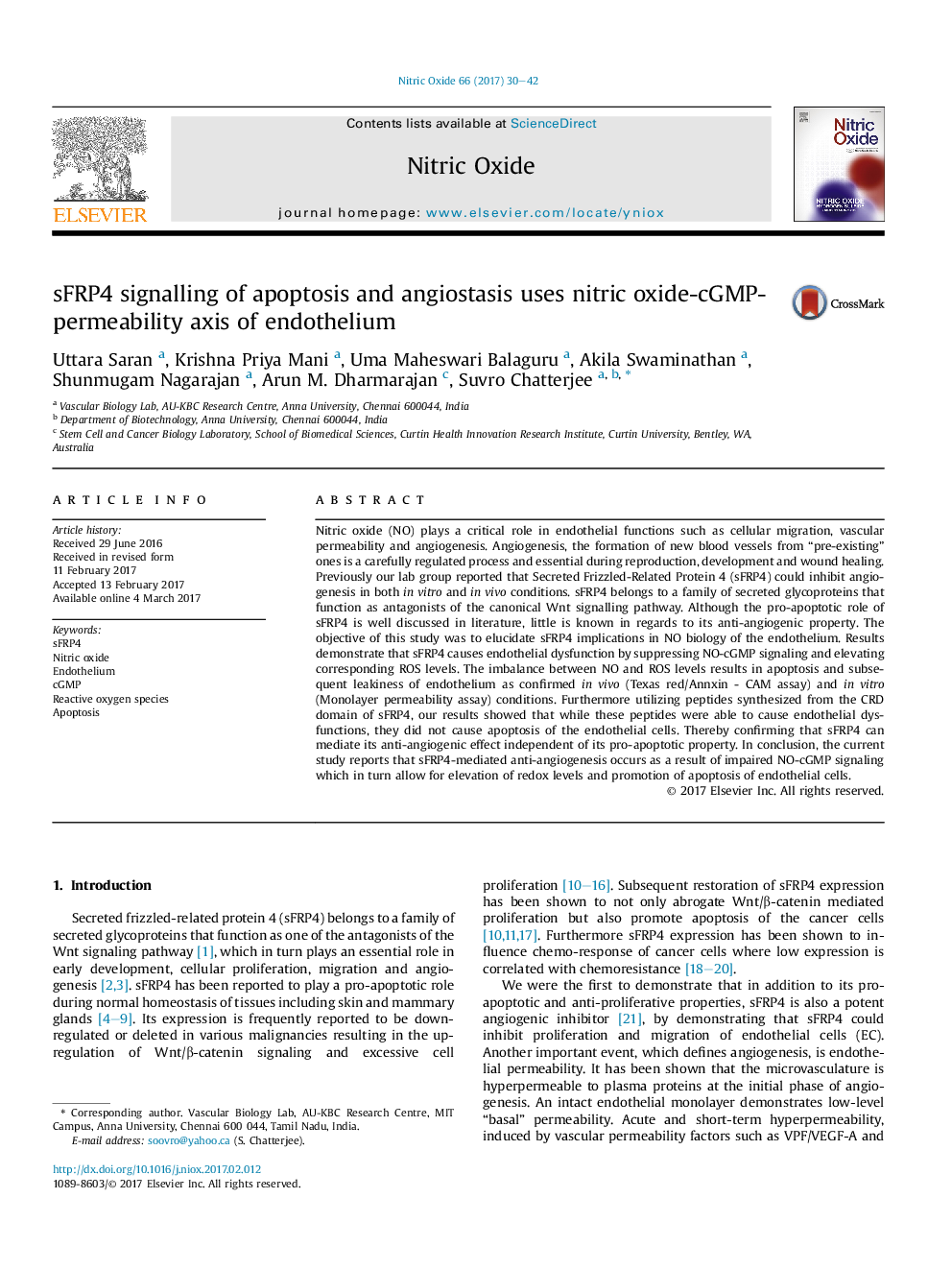| کد مقاله | کد نشریه | سال انتشار | مقاله انگلیسی | نسخه تمام متن |
|---|---|---|---|---|
| 5514239 | 1541594 | 2017 | 13 صفحه PDF | دانلود رایگان |

- sFRP4 dampens NO/cGMP signalling in endothelial cells.
- sFRP4 induces apoptosis in endothelial cells.
- The angiostatic property of sFRP4 attributes to its NO/cGMP dampening effects followed by apoptosis of endothelial cells.
Nitric oxide (NO) plays a critical role in endothelial functions such as cellular migration, vascular permeability and angiogenesis. Angiogenesis, the formation of new blood vessels from “pre-existing” ones is a carefully regulated process and essential during reproduction, development and wound healing. Previously our lab group reported that Secreted Frizzled-Related Protein 4 (sFRP4) could inhibit angiogenesis in both in vitro and in vivo conditions. sFRP4 belongs to a family of secreted glycoproteins that function as antagonists of the canonical Wnt signalling pathway. Although the pro-apoptotic role of sFRP4 is well discussed in literature, little is known in regards to its anti-angiogenic property. The objective of this study was to elucidate sFRP4 implications in NO biology of the endothelium. Results demonstrate that sFRP4 causes endothelial dysfunction by suppressing NO-cGMP signaling and elevating corresponding ROS levels. The imbalance between NO and ROS levels results in apoptosis and subsequent leakiness of endothelium as confirmed in vivo (Texas red/Annxin - CAM assay) and in vitro (Monolayer permeability assay) conditions. Furthermore utilizing peptides synthesized from the CRD domain of sFRP4, our results showed that while these peptides were able to cause endothelial dysfunctions, they did not cause apoptosis of the endothelial cells. Thereby confirming that sFRP4 can mediate its anti-angiogenic effect independent of its pro-apoptotic property. In conclusion, the current study reports that sFRP4-mediated anti-angiogenesis occurs as a result of impaired NO-cGMP signaling which in turn allow for elevation of redox levels and promotion of apoptosis of endothelial cells.
Journal: Nitric Oxide - Volume 66, 1 June 2017, Pages 30-42